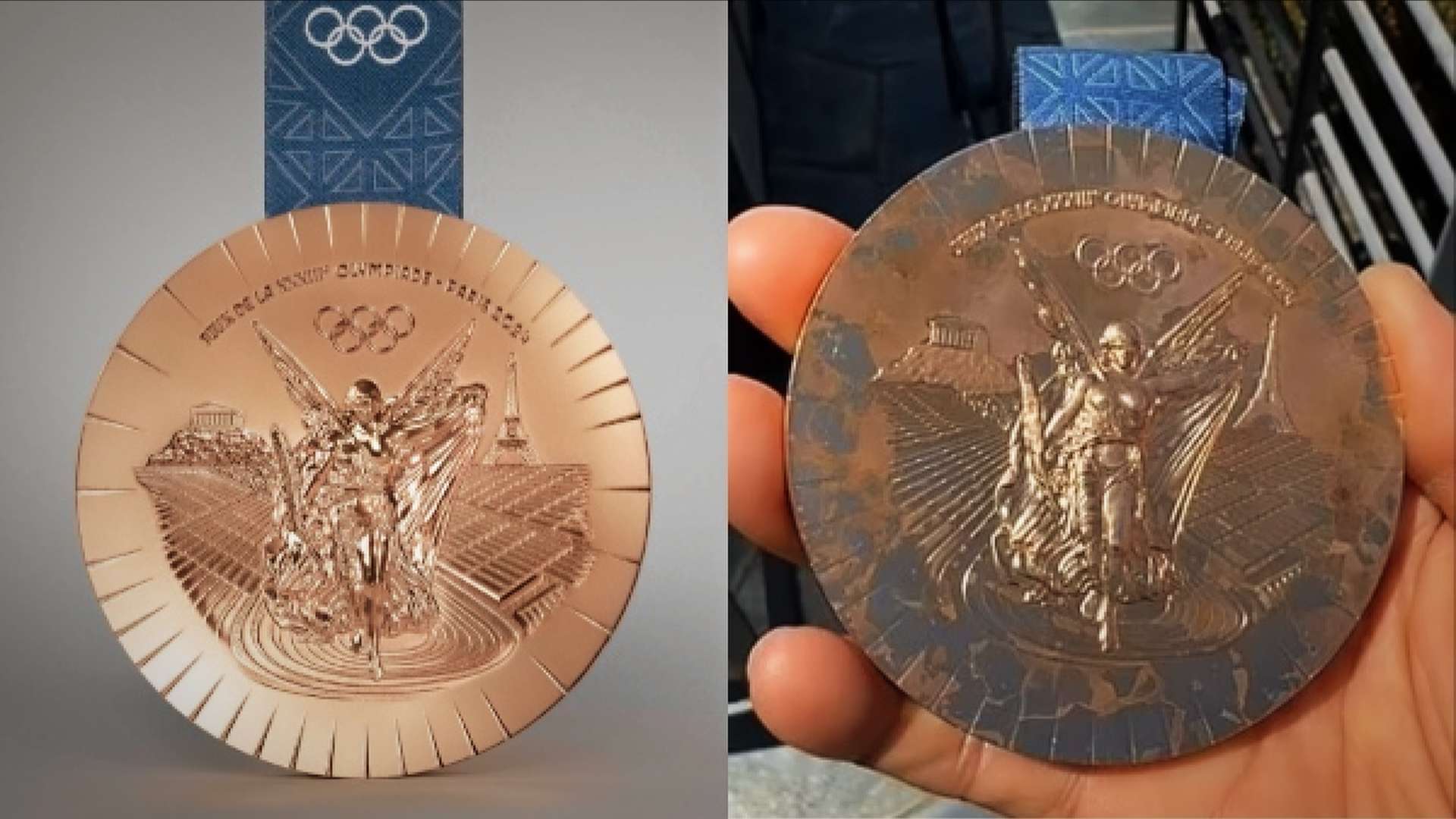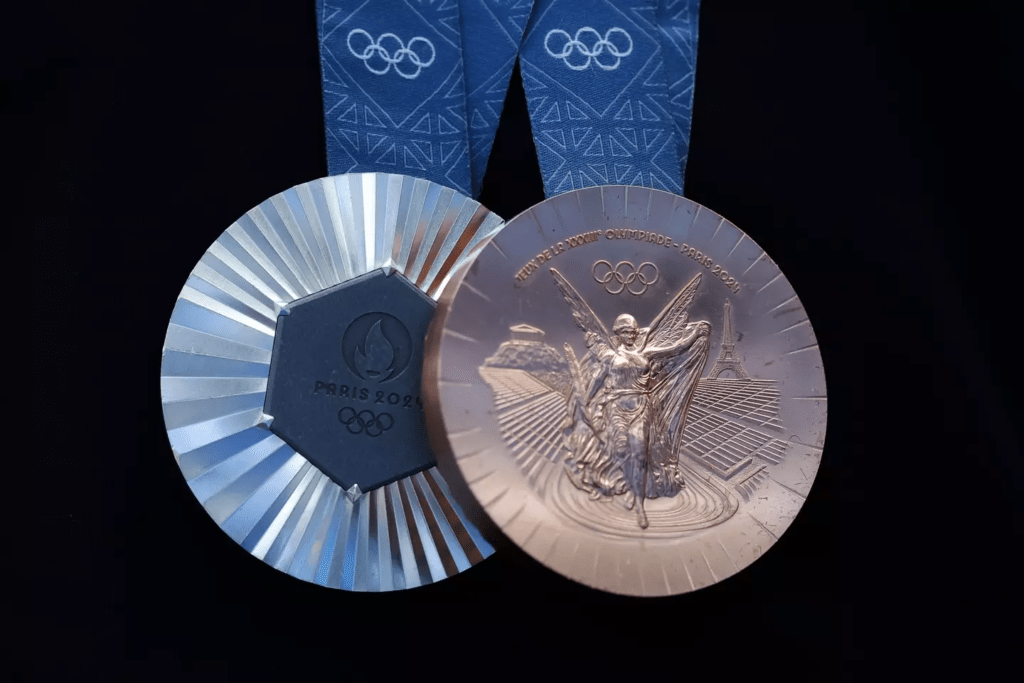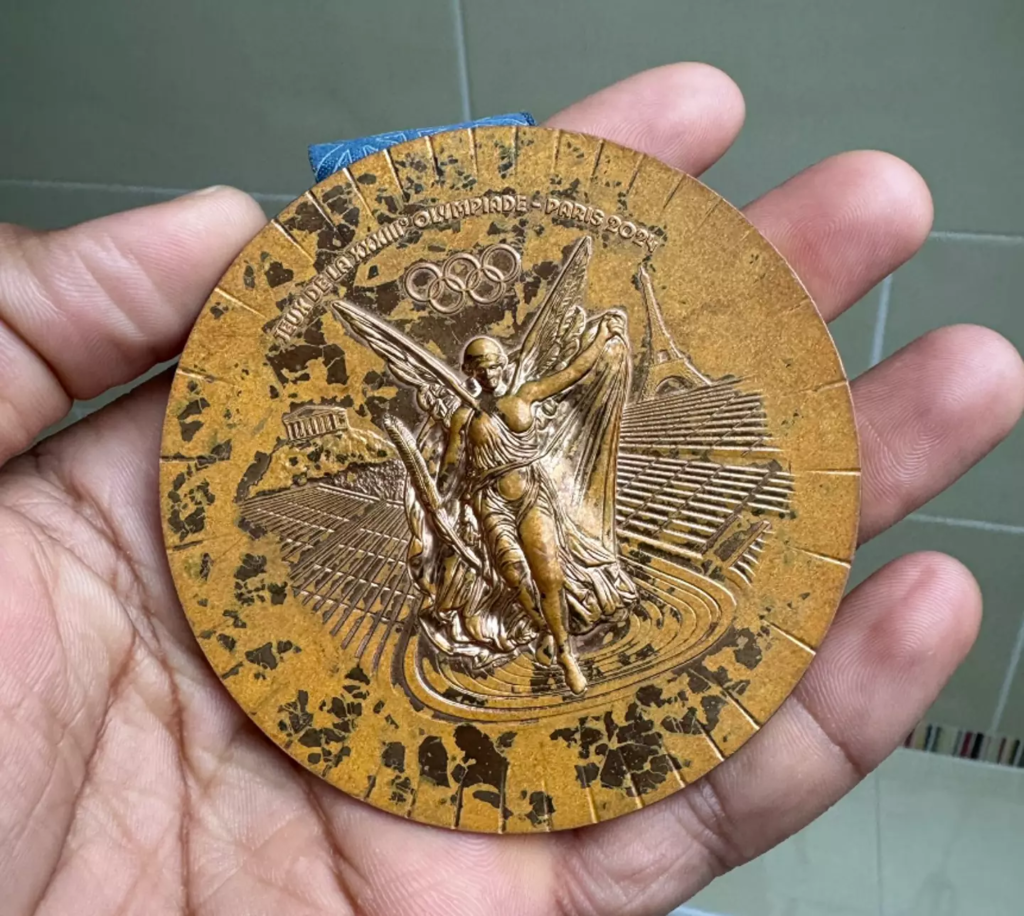Paris 2024 Olympic Medals Controversy: Over 100 Medals Returned by Athletes

Olympic medals symbolize the pinnacle of athletic achievement, embodying years of dedication and perseverance. However, the Paris 2024 Olympic medals have sparked controversy, with over 100 athletes returning their medals due to unexpected quality issues. This unprecedented situation has raised questions about the production standards and design choices of the medals.
After the Games concluded, concerns began surfacing when athletes noticed their medals degrading quickly. Reports indicated that some medals appeared chipped, tarnished, or weathered within days of the ceremonies. This sparked outrage among athletes and fans alike, especially when compared to the durable and eco-friendly medals from the Tokyo 2020 Olympics, which were crafted from recycled materials.
One notable complaint came from Team USA skateboarder Nyjah Huston, who shared his experience on Instagram. He described how his medal began chipping and losing its sheen after minimal use, sparking widespread attention on social media. Athletes shared similar concerns, leading to over 100 returned medals by the end of 2024.
The public outcry has brought attention to the meticulous process of medal production, highlighting the importance of durability alongside design. The Paris 2024 medal controversy not only casts a shadow over the event but also serves as a critical lesson in maintaining quality for such iconic symbols of achievement. Let’s dive deeper into the intricate design and production processes to understand what went wrong.

The Design of the Paris 2024 Olympic Medals
The Paris 2024 Olympic medals were envisioned as a tribute to both the Games’ Greek roots and France’s cultural heritage. Designed by luxury goods conglomerate LVMH, the medals feature a unique blend of historical and artistic elements:
- Front Design: The medals depict Nike, the Greek goddess of victory, symbolizing the timeless spirit of the Olympics. She stands tall in the Panathenaic Stadium, where the modern Olympic Games were revived in 1896.
- Back Design: The reverse side incorporates a piece of iron from the Eiffel Tower, a nod to France’s iconic landmark, alongside imagery of the Acropolis. This design pays homage to both the host city and the ancient origins of the Games.
While the design is undeniably symbolic and artistic, the medals faced criticism for their durability. LVMH, in a statement to the Daily Mail, clarified that although they were responsible for the design, the production was handled by the Monnaie de Paris (Paris Mint). This separation of responsibilities has become a focal point in understanding the root of the quality issues.
The decision to include materials from the Eiffel Tower was intended to add a unique touch to the medals, symbolizing unity and heritage. However, athletes were quick to note that this didn’t compensate for the medals’ lack of durability. The controversy has overshadowed what was meant to be a celebration of artistry and culture, leaving many to question whether too much emphasis was placed on aesthetics rather than functionality.
The Role of Production in the Medal Controversy
The Monnaie de Paris, tasked with producing the medals, has faced significant scrutiny since reports of quality issues emerged. According to La Lettre, the medals’ poor condition can be attributed to changes in the varnish used during production. The previous varnish contained chromium trioxide, a substance later deemed carcinogenic, prompting the mint to adopt a safer alternative. Unfortunately, this change appears to have compromised the medals’ resistance to wear and tear.
A spokesperson for the Monnaie de Paris acknowledged the issue and shared the steps being taken to address it:
“The Paris 2024 Olympic Games Organizing Committee is working closely with Monnaie de Paris to assess medal claims and understand the circumstances and cause of damage. Monnaie de Paris modified the varnish and optimized its manufacturing process to make it more resistant to certain uses of the medals by athletes.”
To date, over 100 medals have been returned by athletes, with replacements already underway. The Monnaie de Paris assured that all damaged medals would be replaced by early 2025, with each replacement featuring identical engravings to match the originals.
This situation highlights the challenges of balancing innovation and safety in manufacturing processes. While the intent to use a safer varnish was commendable, it underscores the importance of rigorous testing to ensure durability. The controversy has sparked widespread debate about the accountability of organizations involved in producing these iconic symbols of victory.

Social Media Buzz: Athletes Speak Out on the Medals
Social media has been flooded with posts from athletes and fans sharing their thoughts on the Paris 2024 medal controversy. Platforms like Twitter, Instagram, and TikTok became the primary outlets for athletes to express their disappointment and for fans to join the conversation.
Here are some examples of the posts that went viral:
Twitter Post: Nyjah Huston
“Can’t believe my Paris 2024 medal is already chipping. We worked so hard for this, and it’s sad to see the quality isn’t holding up. Hoping the replacements come soon!”
— Nyjah Huston (@nyjahhuston)
Instagram Story: Skateboarder Sharing the Damage
In an Instagram Story, Nyjah Huston showed close-up images of his tarnished medal, highlighting the chipped varnish and loss of shine. The story was reshared by several fellow athletes, amplifying the discussion.
View more on Nyjah Huston’s Instagram.
Fan Tweet: Criticism of Production
“Olympic medals should last a lifetime, not just a few days. Athletes deserve better for their hard work. Fix this, @Paris2024!”
— User @sportsfanatic
TikTok Video: “My Paris 2024 Medal Story”
A viral TikTok by an athlete showed a time-lapse of their medal’s deterioration, paired with captions explaining how it tarnished within days. The video gained millions of views and thousands of comments, with users sharing their outrage. Watch the full video here.
Instagram Post: Before and After Images
An athlete shared a carousel post comparing the state of their medal on the podium versus two weeks later. The caption read:
“From the podium to this… My Paris 2024 medal after just two weeks. Glad replacements are on the way, but this shouldn’t happen in the first place.”
Check it out on Instagram.
Public Response
Fans and supporters have been vocal, emphasizing that the Olympic medals are not just souvenirs—they’re lifelong symbols of achievement. Many have called for stricter quality checks, with hashtags like #Paris2024MedalGate and #OlympicMedalFail trending globally.
This social media storm has brought the issue to the forefront, forcing the organizing committee to address concerns publicly. As athletes continue to share their stories, the conversation about quality standards in major sporting events grows louder.
What Lies Ahead for the Paris 2024 Medals?
The controversy surrounding the Paris 2024 medals has prompted swift action from the organizing committee, the International Olympic Committee (IOC), and the Monnaie de Paris. Moving forward, all returned medals will be replaced with identical versions, ensuring that athletes receive the recognition they deserve.
In addition to addressing the immediate concerns, the incident has sparked a broader conversation about the future of Olympic medal production. Experts and stakeholders are calling for stricter quality control measures, better testing protocols, and more transparent communication between designers and manufacturers.
With 5,084 medals produced for the Games, the challenge of replacing over 100 damaged ones is significant but manageable. The Paris 2024 Organizing Committee has pledged to learn from this experience, ensuring that future events uphold the standards of excellence synonymous with the Olympics.
As replacements are rolled out, the hope is that this controversy will serve as a valuable lesson for organizers, manufacturers, and athletes alike. The Olympic Games represent the pinnacle of human achievement, and the symbols associated with them must reflect that same level of excellence.
What do you think about the Paris 2024 medal controversy?
Featured Image Credit: Instagram/@clem_secchi






